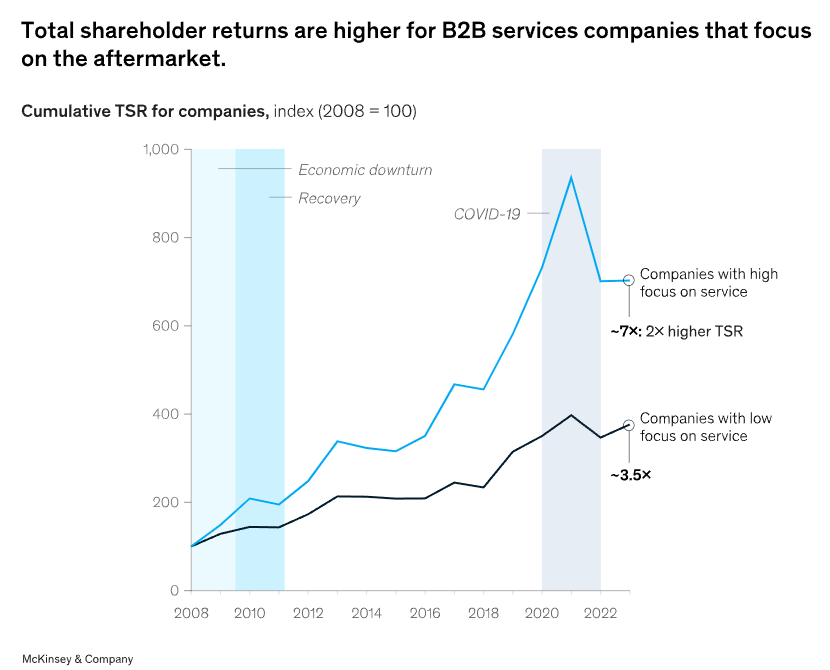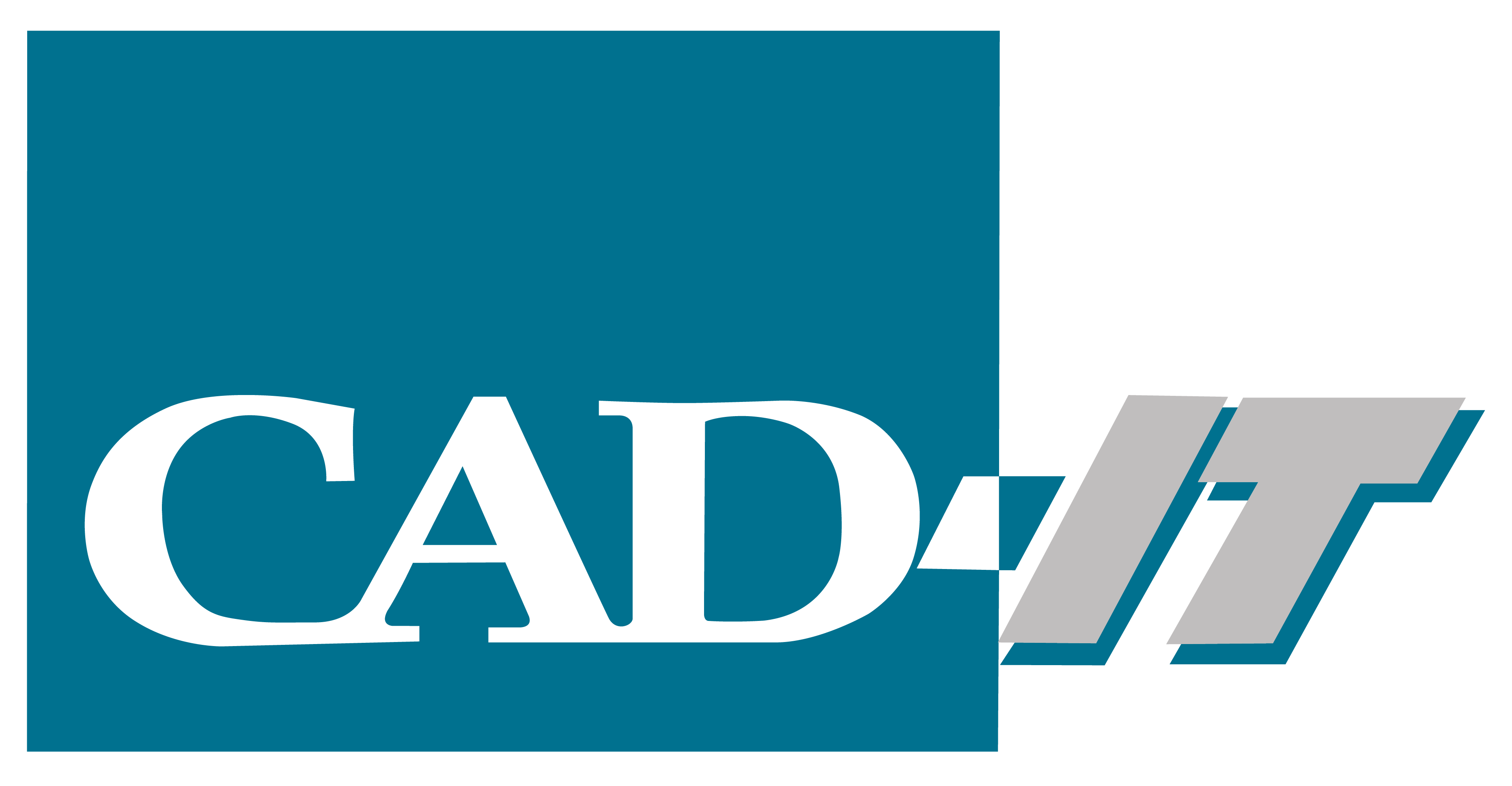
From Products to Services: The Fascinating Evolution of Servitisation
Whether you’re just starting to think about shifting from products to services, or you’re already knee-deep in servitisation strategies, one thing’s clear: the way we do business has changed for good. Gone are the days when simply selling a product was enough. Now, it’s all about delivering value through services that keep customers coming back.
What is Servitisation?
Servitisation is the transformation process where businesses shift from a traditional product-centric model to a service-oriented approach. Rather than simply selling products, companies now offer integrated solutions that combine products with tailored services to deliver ongoing value to their customers. For example, instead of selling equipment outright, a company might bundle it with maintenance, monitoring, and performance optimisation services, ensuring that the product delivers consistent results over its lifespan. The focus is no longer just on the product itself but on the customer experience and the outcomes that the product enables. In today’s competitive landscape, servitisation is helping businesses create stronger customer relationships, generate recurring revenue, and stand out by offering solutions that genuinely meet customer needs.

Where It All Started: From Products to Services (and Why It Matters Now)
Let’s take a quick trip back in time. Decades ago, the model was simple: build a solid product, sell it, and maybe throw in a service plan as an afterthought. Done. But as markets got crowded, companies needed to stand out, and customers started asking for more – more support, more reliability, more value. This sparked the first step towards servitisation, where businesses added basic services like maintenance and repairs to sweeten the deal.
Fast forward, and things got more sophisticated. Companies began bundling products with services, creating tailored solutions that solved real problems. Remember Rolls-Royce’s “Power by the Hour”? Instead of just selling jet engines, they offered performance-based contracts where customers paid only for the time the engine was in use. This was a game-changer. It wasn’t about selling a product anymore; it was about selling uptime and reliability – things that customers actually care about.
The Rise of Customer-Centric Servitisation
These days, it’s all about the customer – seriously. Customer-centric servitisation means the service model is entirely built around what your customers need, want, and value. Think of it this way: if your service isn’t solving their pain points or making their lives easier, it’s not hitting the mark.
Let’s say you manage aftermarket services for a company selling industrial equipment. You’re not just selling machines anymore; you’re offering packages that include everything from predictive maintenance to performance analytics, all designed to keep that equipment running smoothly. The goal? Help your customers get the most out of their investment without them having to worry about breakdowns or downtime. When you design services with your customer’s success in mind, everyone wins.
What’s Driving the Shift? (Hint: It’s Not Just Tech)
1. Digital Transformation – The Big Enabler
Let’s be real: technology is playing a huge role in the servitisation wave. Thanks to IoT, data analytics, and AI, companies can now monitor equipment in real-time, predict issues before they happen, and optimise performance like never before. This shift from reactive to proactive service has completely changed the game.
Take predictive maintenance, for example. With sensors and real-time data, you can spot potential problems before they become costly breakdowns. For your customer, that means fewer headaches more reliability. And for you? A stickier relationship that’s harder for competitors to break.
2. Changing Customer Expectations
Customers today expect more – and why shouldn’t they? They want solutions that fit their exact needs, deliver measurable results, and evolve as their business does. That’s where personalised service offerings come in. It’s not just about slapping on a one-size-fits-all service plan; it’s about creating tailored packages that solve specific issues. The more relevant and valuable your service, the longer your customers will stick around.
3. Sustainability and the Circular Economy
Here’s a big one: the push for sustainability is transforming how businesses think about servitisation. By focusing on extending product lifecycles and reducing waste, servitisation aligns perfectly with the circular economy. Some companies are even offering remanufacturing services as part of their package, giving customers more affordable and eco-friendly options. It’s a win for your business, your customers, and the planet.
Real-World Examples: Where Servitisation is Thriving
Industrial Equipment
Imagine you’re in charge of aftermarket services for a company selling heavy machinery. In the old days, you’d sell a machine and wait for the customer to call if something broke. Now, you’re offering a complete service package that includes remote monitoring, predictive maintenance, and even performance analytics. Your customers get more uptime and less stress, while you lock in long-term contracts and build stronger relationships. It’s a win-win.
Automotive Industry
The automotive sector is another great example. Car manufacturers aren’t just selling vehicles anymore – they’re selling mobility solutions. Subscription models, pay-per-mile options, and comprehensive service packages are becoming the norm. Customers love the flexibility and convenience, and manufacturers get to keep a steady revenue stream flowing.
The Road Ahead: Challenges and Opportunities
The Tough Stuff: Resistance and Complexity
Making the switch to a service-centric model isn’t always smooth sailing. You’ve got to bring your whole organisation on board, shift mindsets from selling products to delivering outcomes, and invest in the right tools and training. And let’s not forget the challenge of managing increasingly complex service offerings while keeping everything running smoothly.
The Upside: Growth and Loyalty
But here’s the upside: nail servitisation, and the rewards are huge. You get more loyal customers, steady recurring revenue, and a big competitive edge. By focusing on delivering real value through services, you turn one-time buyers into long-term partners.
The Future: What’s Next in Servitisation?
Predictive to Prescriptive Maintenance
Right now, predictive maintenance is all the rage, but the future’s all about prescriptive maintenance – using data not just to predict issues but to automatically take action before they cause trouble. This next level of service will give your customers even more peace of mind and make your offerings even more indispensable.
Deeper Customer Relationships
As customer expectations keep rising, the need for personalisation and fast responses will keep growing. That means you’ll need to stay on your toes, constantly innovating to meet those demands. The companies that do this well will have the strongest customer relationships and the best chances of long-term success.
Wrapping It Up: Your Next Steps in the Servitisation Journey
The shift from products to services isn’t just a one-time change – it’s an ongoing journey. And for aftermarket service managers like you, staying ahead means always looking for new ways to add value, improve customer experiences, and optimise service delivery. Whether you’re just getting started or refining your strategy, remember: the journey is continuous, but the rewards are worth it.
So, where are you in your servitisation journey? There’s always room to push further, deliver more value, and build stronger customer connections. The future is service-centric – let’s make sure you’re ready for it.
Supportsing Industrial Businesses in Navigating Servitisation
When it comes to implementing servitisation strategies, knowing where to start – or even how to optimise what you’re already doing – can be daunting. That’s where CAD-IT comes in. As experts in industrial transformation, CAD-IT specialises in helping businesses like yours align their product and service strategies to deliver maximum value. Whether you’re transitioning from a product-centric model or looking to fine-tune your existing service offerings, CAD-IT provides tailored solutions that ensure you’re not just reacting to market changes but leading the charge. From developing data-driven service models to integrating advanced technology like IoT and predictive analytics, CAD-IT equips you with the tools and insights needed to design customer-centric services that keep you ahead of the curve. With our deep industry knowledge and hands-on approach, we partner with you every step of the way to help unlock new revenue streams and solidify long-term customer loyalty.
